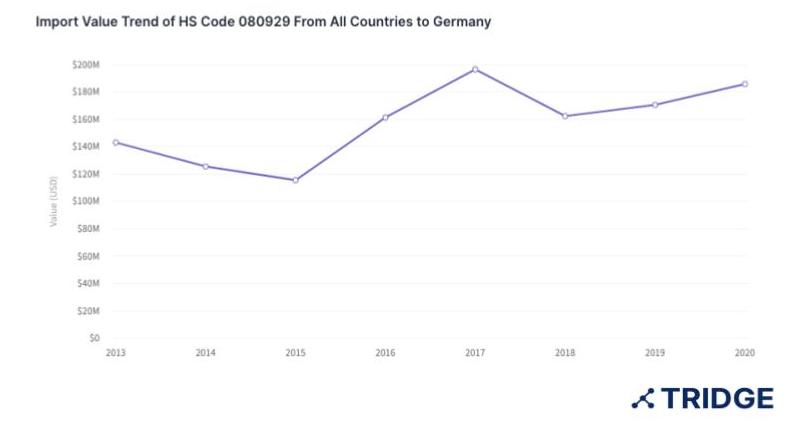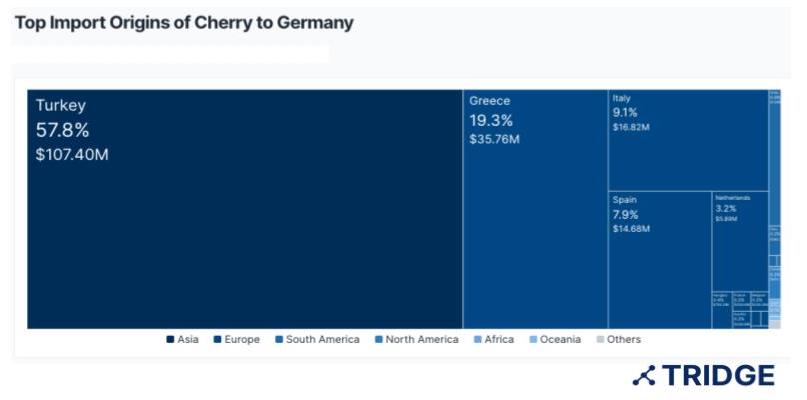Germany’s cherry imports to pick up in 2021
Cherries have become very popular in Germany in the last few years and have emerged as a trending item with several health benefits. Fresh cherries are considered a seasonal product in Germany and they can be found in markets easily during June and July as a result of domestic production and imports. The country is the third-largest importer of cherries in the world after Hongkong and Russia and is the largest cherry importing region among the EU countries. Between 2010 to 2020, a major share of the cherries consumed in Germany was imported, with import volume varying between 45,000 and 73,000 MT of cherries annually.

Source: Tridge.
It is a little hard to estimate Germany’s cherry production for MY 2021-22 as heavy rains in the second half of July have impacted the main producing regions. According to the estimates of USDA, it is expected that the production has fallen by at least 25%. Cherry orchards and open-field crops in the province of Limburg, Belgium have witnessed damage at a very large scale. A large area of fields of crops had been washed away while remaining have been lost due to mold, cracking, and high root pressure. The production is estimated at an aggregate of 34,000 metric tons which is lower than the initially estimated production during 2020 of 49,990 metric tons - 36,797 metric tons of sweet cherries and 13,193 metric tons of sour cherries.
Furthermore, the shortage of seasonal labor at the onset of the pandemic has affected cherry production more than other agricultural products. Industry sources report that there are fewer seasonal workers who are willing to come from the neighboring countries to work in Germany. On top of this, COVID-19 related additional production costs are expected to remain in place and reduce the profitability associated with cherry production, increasing the overall production cost.
Germany imports a large share of cherries for domestic consumption majorly from other EU member states. Greece, Italy, and Spain have the largest share in Germany’s cherry imports and it also relies on Austria for sweet cherries and Hungary for sour cherries. The country also imports cherries from non-EU suppliers like Turkey (largest share in imports) for sweet cherries and Serbia for sour cherries. In MY 2021-22 cherry imports are likely to increase substantially from other EU member states as well as from Turkey and Serbia to compensate for the lower German domestic production.

Source: Tridge.
Sources
- Fresh Plaza. “Germany Still Third-Largest Importer of Fresh Cherries in the World."
- Fruit Net. “Europe's Flood Damage Begins to Emerge.”
- USDA. “Overview on the German Cherry Sector 2021.”
- Tridge. Trade Data





